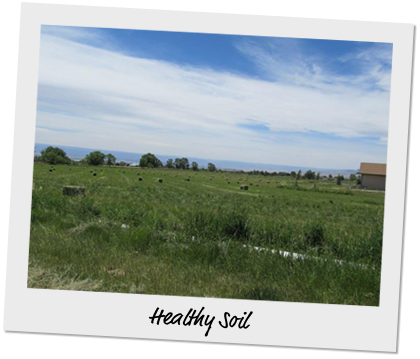Soil is a digestive system. When you apply organic soil fertilizers and minerals to the soil, microbes process what you have just applied and deliver it to your future crop. If the microbes and fungi are not working at full capacity, the nutrients you’ve just added may not get to your crop! In current farming practices, we sometimes destroy or reduce our beneficial soil bacteria and fungi— by tilling for example—which exposes these organisms to the sun and elements. We can reintroduce biological components back into the soil. Contact us today to learn more!
Building better soil composition
At D R Fish Fertilizer Company, we’ve cultivated a progressive approach to preserving and extrapolating the presence of essential soil microbes and fungi, while also lowering soil pH. In utilizing liquid fish, liquid nitrogen and humate soil amendments, we’ve seen tremendous improvements to the biology of our soils and hemp throughout Hotchkiss, Delta, Crawford, and Paonia, CO!
- We’ve improved the protein content of our hay by over 60% and lowered the soil pH in our hay field from 8 to 7.4-7.6.
- We get three cuttings of hay per season, although we leave the last cutting in the field for wintering deer and elk. We support these claims with hay and soil sample analysis!
- Studies have shown that for each percent of organic matter in the soil, there’s 40-60lb of nitrogen per acre.
Italian Rye Grass seeding
Another practice we have found that helps increase organic matter, is to over-seed every other year with Italian Rye Grass. This practice increases the tons per acre in forage harvested. And, at the end of the second season, the grass dies and leaves the biologically active root mass in the soil. This increases the overall organic matter. Italian Rye Grass is also cost effective and can be purchased for about $1.54/lb. We apply 10lb per acre in the over-seeding process. There are other cover crops that can be suited to your specific needs. For example I also use winter ryes and winter barleys planted in the fall.
When we started taking annual soil samples we started with .5% organic matter. We now average 4-4.5% after over-seeding. A 2010 soil sample indicated 5.4% in one area!
Benefits of biologically active soils:
- Wide range of beneficial bacteria, fungi, and other species.
- Rebuilds soil structure for better air and water intake to the root zones.
- Suppresses soil pathogens, good bacteria consume non-beneficial bacteria Increases soil carbon with more nitrogen becoming fixed Readily available soil minerals provide plants what they need, when they need it.
Better soils mean better crops
- Healthy soils grow healthy crops: You need a system of inputs that utilize minerals, organic matter and carbon cycling to make the soil biology work.
- Healthy soils increase plants natural defenses: Natural defenses ward off insect pressures.
- Soil minerals should be biological: Biological minerals are more readily available for the plants (crop) needs and go to work faster.
- Healthy soils increase soil ability to capture and retain water: More water in the plant root zone contribute to efficient water use by the plant and the farmer.

Soil is a living organism, just like the human body.
Soil needs the same nutrients, microorganisms, minerals, microbes, amino acids, enzymes, bacteria, and fungi that the human body needs to stay healthy. We started using fertilizers and soil amendments that returned these vital elements to the soil — liquid fish, liquid nitrogen, and humate soil amendments!
What should you do?
If you don’t know what your soil needs, how do you know what to add? We always advise our customers to take a soil sample first, then we can work up a recipe to improve their soil and measure the results in the following years.
Best deal we’ve found for soil test can be found at Midwest Labs.
Our Recommendations
- Soil Samples = S3C (Complete Analysis) Test (with recommendations)
- Hay Samples = F3 (Complete Mineral) Test and F10 (Relative Feed Value) Test
